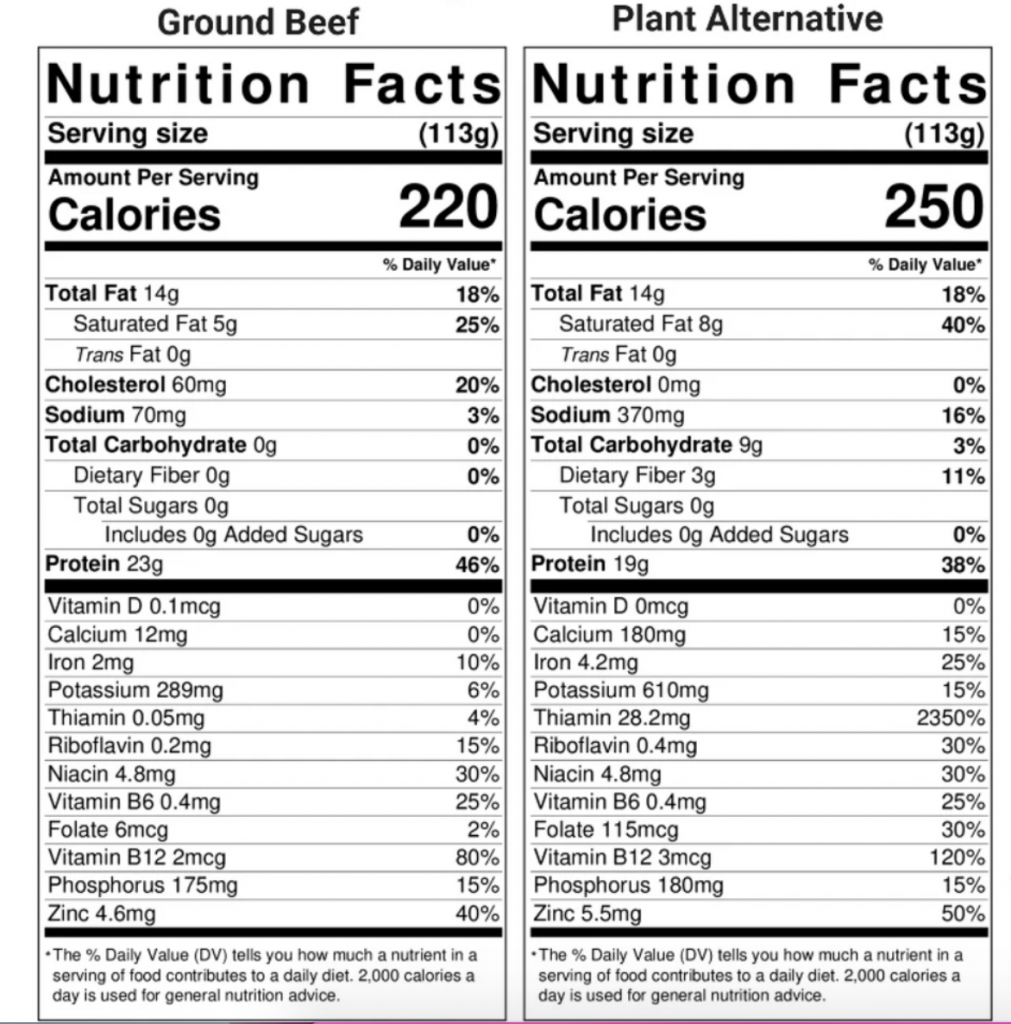Market trend analysis shows the global plant-based meat alternative market size is expected to grow at a compound annual growth rate (CAGR) of 19.4% from 2020 to 2027. The rise is attributed to growing consumer demand for plant-based diets and rising awareness about animal rights and climate change. However, how does it stack up nutritionally. A Duke University research team examined the nutritional content of plant-based meat alternatives, using the science known as ‘metabolomics. The results are as different as plants and animals. Despite labeling claims, meat alternatives and meat are not nutritionally equal. The difference is in important metabolites that each carries, but the other does not.
Despite the fact that meat-substitute manufacturers have gone to great lengths to make plant-based products with the same mouth feel and meaty taste as animal proteins, the researchers say each category has distinct nutritional profiles that the consumer may not be aware of.

Plant-based meat alternative manufacturers use leghemoglobin, an iron-carrying molecule from soy, and red beet, berries and carrot extracts to simulate red juices. The texture of these products is made meat-like by adding indigestible fibers like methyl cellulose. And to boost protein, isolated plant proteins from soy, peas, and other plant sources are added in concentration. And, some meat-substitutes add vitamin B12 and zinc to further replicate meat’s nutrition.
This Scientific Reports published study says it’s the nutrition components that are not on the labels is where the products differ significantly from meat.
The metabolites that the scientists measured are building blocks of the body’s biochemistry, crucial to the conversion of energy, signaling between cells, building structures and tearing them down, and a host of other functions. There are expected to be more than 100,000 of these molecules in biology and about half of the metabolites circulating in human blood are estimated to be derived from our diets.
“To consumers reading nutritional labels, they may appear nutritionally interchangeable,” said Stephan van Vliet, a postdoctoral researcher at the Duke Molecular Physiology Institute who led the research. “But if you peek behind the curtain using metabolomics and look at expanded nutritional profiles, we found that there are large differences between meat and a plant-based meat alternative.” See below.

Meat and Plant-Based Meats Differ in Important Metabolites
The Duke Molecular Physiology Institute’s metabolomics core lab compared 18 samples of a popular plant-based meat alternative to 18 grass-fed ground beef samples from a ranch in Idaho. The analysis of 36 carefully cooked patties found that 171 out of the 190 metabolites they measured varied between beef and the plant-based meat substitute.
The beef contained 22 metabolites that the plant substitute did not. The plant-based substitute contained 31 metabolites that meat did not. The greatest distinctions occurred in amino acids, dipeptides, vitamins, phenols, and types of saturated and unsaturated fatty acids found in these products.
Several metabolites known to be important to human health were found either exclusively or in greater quantities in beef, including creatine, spermine, anserine, cysteamine, glucosamine, squalene, and the omega-3 fatty acid DHA. “These nutrients have potentially important physiological, anti-inflammatory, and or immunomodulatory roles,” the authors said in the paper.
“These nutrients are important for our brain and other organs including our muscles” van Vliet said. “But some people on vegan diets (no animal products), can live healthy lives — that’s very clear.” Besides, the plant-based meat alternative contained several beneficial metabolites not found in beef such as phytosterols and phenols.
“It is important for consumers to understand that these products should not be viewed as nutritionally interchangeable, but that’s not to say that one is better than the other,” said van Vliet, a self-described omnivore who enjoys a plant-heavy diet but also eats meat. “Plant and animal foods can be complementary, because they provide different nutrients.”
He said more research is needed to determine whether there are short-term or long-term effects of the presence or absence of particular metabolites in meat and plant-based meat alternatives.
Click Here for Full Text Study




